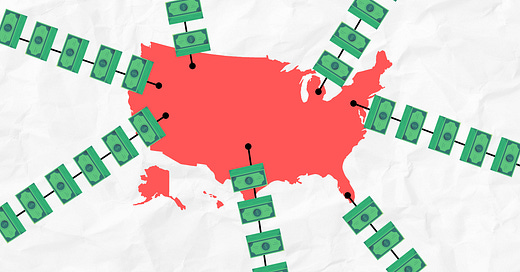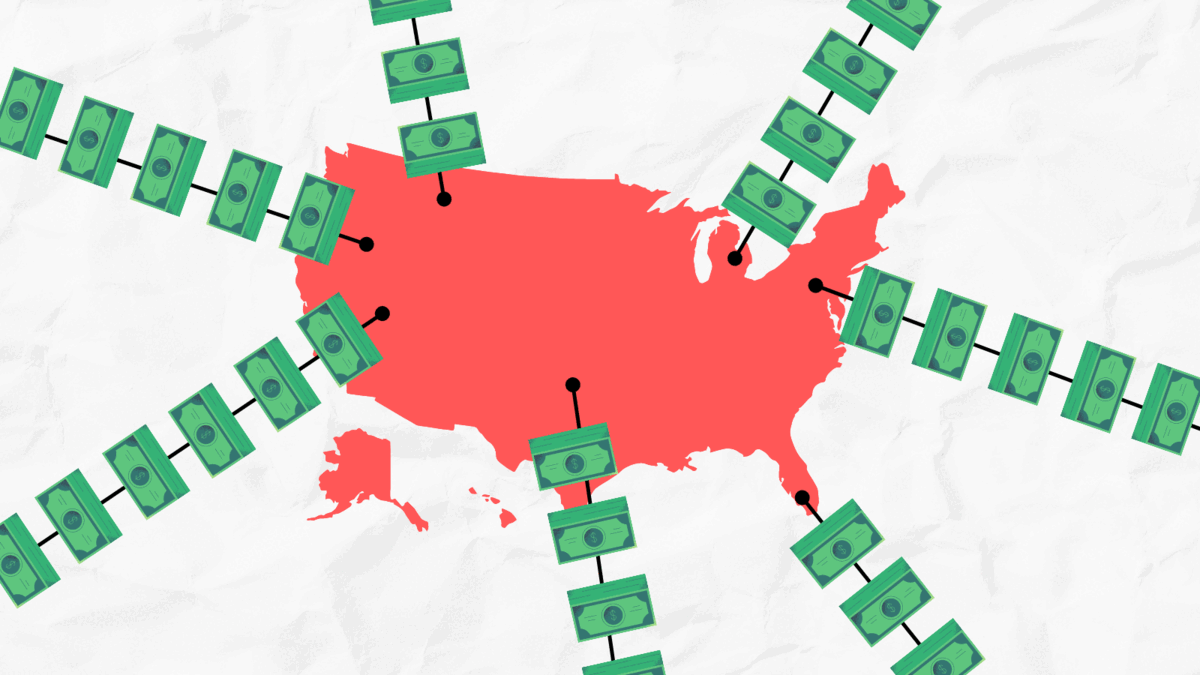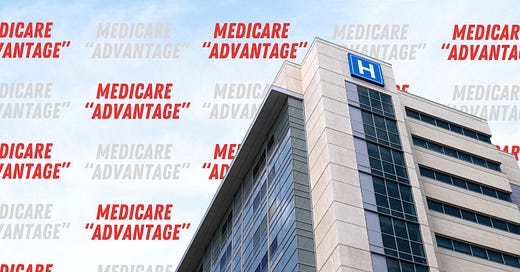

Discover more from HEALTH CARE un-covered
In 2021, 72% of UnitedHealth’s $222.9 billion health plan revenue came from taxpayers.
94% of its total U.S. membership growth over the past 10 years was in government programs.
As I noted in my last post, UnitedHealth Group made more profits last year than any health insurer has ever made for its shareholders–and considerably more than Wall Street financial analysts had expected. Investors were so impressed they rushed to buy shares of the company’s stock.
That might not have surprised you. United and other big insurers have reported record profits every year over the past decade. What might surprise you, though, is that even if you are not enrolled in a United health plan, some of your money likely wound up in the pockets of United’s already rich shareholders. That’s because you and America’s other taxpayers increasingly are fueling United’s profits.
In its press release last week, United bragged about the growing number of people it “serves,” including the number of people in its health plans. The release said the company had 10.5 million more “members” in its health plans in 2021 than in 2011. But when you look more closely at the numbers and do some math, you’ll see that very little of that growth has been in the private sector.
Here are some details the company’s executives didn’t point out:
In 2021, United insured nearly 1.6 million fewer people in its commercial risk division–the part of the company in which United is actually the insurer–than it did in 2011. The 7,985,000 people in United’s commercial risk plans last year (including people who buy coverage on their own through the ACA marketplace) are folks who typically don’t have access to coverage through an employer. (In 2011 United had 9,550,000 in its commercial risk plans.)
The number of people covered in plans United administers for employers and other large groups grew by only 2,275,000 between 2011 and 2021. Keep in mind that United and its competitors do not insure people enrolled in these group plans. They make money by charging their employer (and in some cases union) customers (who are the actual insurers) a hefty fee to administer their workers’ health plan benefits. When you combine the number of people in United’s risk-based plans with those in the fee-based plans, you’ll find that United’s private sector membership increased by only 710,000 between 2011 and 2021.
By doing a little more math, you’ll discover that 94% of its total U.S. membership growth over the past decade was in government programs, specifically Medicare through its Medicare Advantage and Medicare supplement plans (marketed largely with AARP); and the state Medicaid programs it administers.
And when you do just a little more math, you’ll discover that 72% of the $222.9 billion in revenue United’s health plan division took in last year came from you and me through the taxes we fork over to our Uncle Sam and the additional premiums many Medicare beneficiaries pay the company to cover their out-of-pocket expenses.
Considering all of that, it’s neither accurate nor appropriate to refer to United and its peers as insurers, or, for that matter, as “payers” (except in the sense that they use our employers’ and our Uncle Sam’s money to pay doctors and hospitals for treating us).
A brand new reason why it isn’t accurate to label United as an insurer or payer is the fact that last year, for the first time in the company’s history, it made more money from a fast-growing division called Optum than from the division that administers health insurance plans for employers and the government and the shrinking number of people it actually insures (the division the company calls UnitedHealthcare).
This is a huge change at United in just 10 years, and it tells a lot about where the company will be focusing most of its attention in the future. And if you are a health care provider (doctor, hospital or clinic administrator, pharmacist, etc.), you need to understand this, and, in my opinion, be very worried.
In 2011, Optum took in just $29 billion in revenues, a relatively small percentage of the company’s total revenues for that year. It grew fivefold over the next 10 years; last year it contributed $155 billion to United’s total revenues.
And of the company’s $24 billion in profits last year, more than half of it for the first time came from Optum for the first time.
It is Optum that operates one of the country’s largest pharmacy benefit management companies. It is Optum that now owns and operates thousands of physician practices and outpatient facilities, including kidney dialysis giant DaVita. And it is Optum that is now the country’s largest employer of doctors, now well north of 50,000.
United certainly is not alone. Aetna is now part of CVS, which owns and operates thousands of retail pharmacies and clinics and has its own PBM. And Cigna, where I used to work, more than doubled in size a few years ago when it merged with Express Scripts, one of the country’s biggest PBMs.
I’m not suggesting that these companies are going to get out of the health insurance business anytime soon. Even though that business is not growing as fast and is contributing increasingly less to those companies’ overall profits, they nevertheless have figured out how to take more and more money from us and our employers year after year.
Consider these final numbers for today:
An employer-sponsored family plan cost an average of $13,770 in 2011 (and $5,791 in 1999). Last year it was $22,221.
Meanwhile deductibles that families have to meet before their coverage kicks in has more than doubled over the past ten years.
And when you combine premiums and deductibles that families have to pay before their coverage kicks in, the total is now more than 10% of a family’s household income in 37 states, up from just 10 a decade ago.
As the Commonwealth Fund reported earlier this month, “because incomes have not kept pace (with increases in premiums and deductibles), health insurance is taking up a larger and larger percentage of household budgets. To make matters worse, workers are making wage concessions for company benefits that often cover less of their health care costs.”
The bottom line here, which our politicians and, sadly, even our employers pay precious little attention to, is this: American families are sacrificing more and more every year, sending more and more money that should have gone into their paychecks (and that they pay in taxes) to companies like United. So those companies can make their already rich investors even richer.
P.S.: Since “insurer” and “payer” are no longer an accurate label for these companies, what do you think we should call them now? Let’s make a little contest of this. Send me your suggestions and in a couple of weeks I’ll announce the one that gets the most votes.
Subscribe to HEALTH CARE un-covered
Pulling back the curtains on how Big Health is hurting Americans and how we got to this point.











Terrific piece - thank you. How can it be seen more widely?
Great Piece. Can you cite the sources for the stats on 94% through Government programs? It may be in here, but I can't find it. Thanks - T